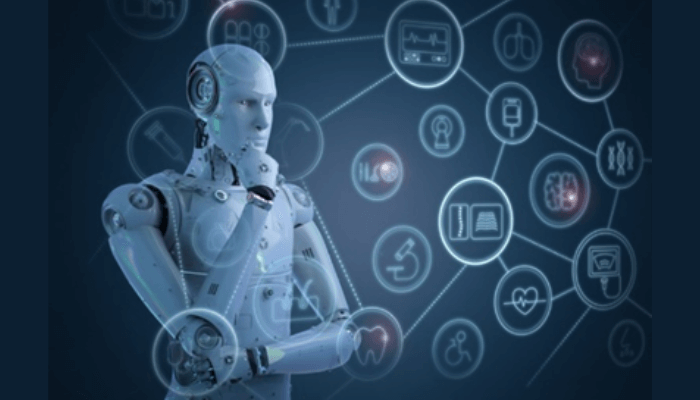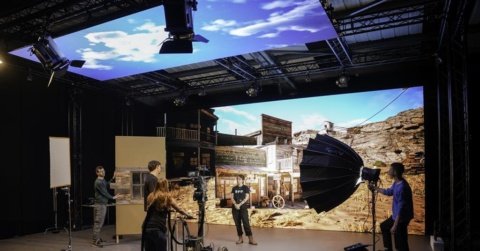Something remarkable has been happening in the art world in recent years. A few typed words can now conjure vivid, original images in seconds: portraits that look like oil paintings, surreal landscapes, and even imagined museum galleries. All created not by hand, but by machine. Artificial Intelligence (AI) has moved beyond data crunching and autonomous vehicles to paint, sketch, and sculpt its way into creative territory. Depending on who you ask, this shift is either thrilling, unsettling, or both. But there’s something many people miss: not all AI in art is the same. I prefer to think of it as a spectrum, not as a single tool.
The AI revolution in the arts is expanding along two paths that we often confuse, and each has different implications. On one side are generative AI systems like DALL-E, Midjourney, and Stable Diffusion—tools that produce complete artworks from simple text descriptions. Type “impressionist painting of a dysfunctional cityscape”, and the machine delivers something that would have taken a human artist hours or days to create. Generative AI represents the most visible and provocative face of AI in the creation of images. These systems, trained on billions of images from the internet, can produce amazing visuals at the click of a button. But can we consider these automatic creations, emerging from a black box of code and computation, as art?
On the other side are co-creative or assistive AI tools; these are systems designed to enhance rather than replace human creativity. They might suggest colour palettes, help with perspective problems, or offer real-time feedback on composition. I think of them as incredibly smart assistants rather than autonomous creators. They work with the human creators, not instead of them. The process becomes dialogical, iterative, interactive, and collaborative. The artist retains control, steering the process, making choices, and accepting or rejecting the AI’s inputs. Creative agency remains human, even as the machine contributes speed, variation, or insight.
This distinction matters more than we realise. Generative AI works in discrete bursts—you give it a prompt, it gives you an image, and you iterate. Co-creative AI is more like having a conversation throughout the entire creative process. The difference isn’t just technical; it’s almost philosophical. Between these poles lie various collaborative relationships. In prompt-driven creation, humans become more directors than makers, providing detailed instructions while AI executes the visual work. In interactive, collaborative partnerships, humans and machines iterate together—the human guides and selects while the AI responds and suggests.
When people ask me about AI’s role in the arts, my answer is always the same: “It depends.” This answer is not evasive on my part; it is the most honest response I can give to this complex question. Perhaps a more useful question than “Is it art?” would be “When is it art?” The line separating a mere image from a meaningful work of art isn’t defined by how it was made but by the context, intention, and reception that surround it. A photograph, a ready-made artwork, or an immersive installation created with technology can all become art when embedded in a process of human reflection, selection, and framing. What matters isn’t just the object itself but the decisions, risks, and values that inform its creation and presentation. When an artist uses AI to explore an idea, raise a question, tell a story, or confront an aesthetic tradition, the resulting work enters the cultural space of art—not because it was made by hand, but because it carries meaning, engagement, and intention. Even when the machine generates visual content, it is a human person who chooses the input, interprets the output, and situates it within broader conversations about creativity, authorship, identity, or beauty. The question of authorship in such collaborations often provokes resistance, but it’s not without precedent. El Anatsui works in his studio with many assistants who help clean, cut, bend, and tie bottle tops according to his instructions. Though the assistants physically labour on the work, no one doubts that the final creation is an artwork by El Anatsui. But if an AI image is churned out automatically without thought or purpose—just a question thrown at ChatGPT with the output treated as decorative content—then it may remain just that: an image, not art. The threshold for something to be considered art lies not in the tool, but in the gesture of transformation. When someone takes raw material and infuses it with care, thought, and expressive weight, that material can cross into the realm of art. AI may challenge old definitions, but it reaffirms a timeless one: art begins not with a product, but with human intentionality and cultural resonance.
AI’s most profound impact may be its democratisation of visual creation. Traditional art education required years to master basic technical skills—realistic figure drawing, colour theory, and complex digital painting software. AI tools are flattening that learning curve dramatically. But the intersection of AI and visual art extends far beyond static image generation. Artists are creating immersive installations where AI processes live video feeds to generate responsive visual environments that shift based on viewers’ movements. Digital sculptures learn and evolve their forms over time, creating artworks that are never the same twice. Augmented reality experiences bring intelligent visual elements onto physical spaces. Projection mapping installations use AI to analyse architectural surfaces and generate visuals that respond to the geometry and history of buildings. Some compelling works are emerging from AI’s ability to process and reinterpret visual data in real-time—analysing crowd movements to generate abstract visualisations, processing biometric data to create personalised colour palettes, or transforming surveillance footage into flowing, painterly abstractions. This landscape reveals AI as a catalyst for entirely new categories of visual expression that challenge our fundamental assumptions about what visual art can be and how it can behave.
I believe that, despite its challenges, AI holds real promise for the visual arts. At its best, it can be a tool of expansion rather than removal—broadening who can make art, how art can be made, and what forms it might take. AI can encourage cross-disciplinary collaboration, with artists working alongside engineers, data scientists, designers, and ethicists to create projects that bridge art, code, and critical inquiry. These collaborations are already generating hybrid practices that challenge and enrich our understanding of both art and technology. AI forces us to reconsider what creativity is. If a machine can produce something that looks like art, is it art? Does intention matter more than execution? Can a work without a human story behind it move us? These questions don’t diminish art—they deepen our engagement with it.
Like every significant development, AI shouldn’t be embraced uncritically. There are real dangers in its careless or exploitative use. But to dismiss it entirely is to miss the opportunity it offers—not to replace human creativity, but to reflect it back to us in strange and illuminating ways. Art has always responded to new tools. Oil paint, photography, and digital software—each sparked resistance, then revolution. AI may prove no different. What matters isn’t just what it can do, but how we choose to use it. In whose hands? Toward what ends? And with what respect for those who came before?
The future of AI in art isn’t just technological—it’s ethical, relational, and still, at heart, a human story. The artists who will thrive are not those who try to match the machine’s speed or precision, but those who use these tools to deepen their vision, to amplify their uniquely human perspective. What matters is not the novelty of the medium but the creativity and sensitivity with which it’s used. AI may generate images, but only people can infuse them with meaning, purpose, and beauty. The future of art in the age of AI belongs to those who can imagine new realities—and make them felt. As AI technology continues to advance, the relationship between human and machine creativity will likely become even more nuanced. The current binary thinking—AI versus human, replacement versus enhancement—may give way to more sophisticated collaborations where the boundaries become less clear. What seems certain is that this technology isn’t going away. We’re living through a transition period. New technologies always disrupt, finding their proper place. The artists who thrive will be those who figure out how to use these tools to amplify their uniquely human perspective rather than compete with machine efficiency.
Jess Castellote: Director, Yemisi Shyllon Museum of Art, Pan-Atlantic University.



